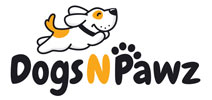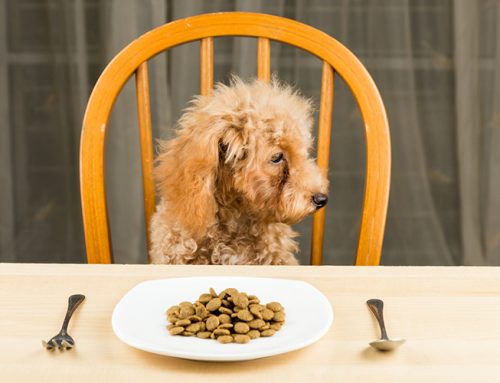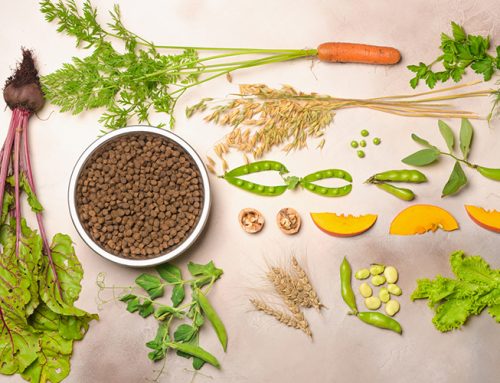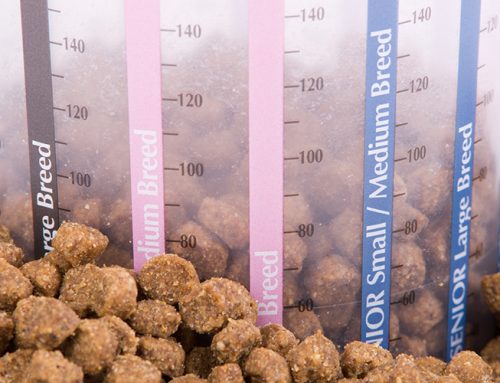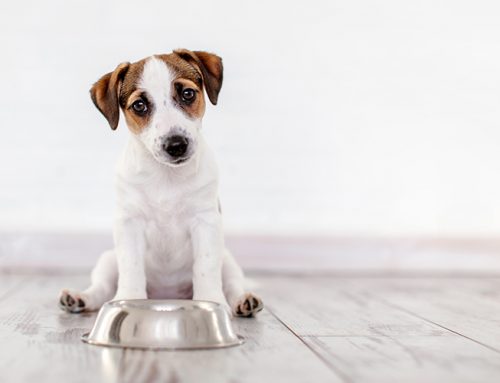Figuring out how much of any type of food to feed your dog is always a puzzle. Wet food is no different. If you’re trying canned food for the first time, it will take some experimenting to figure out the perfect amount for your dog. That’s also true if you’re switching food brands, because each food is formulated differently and has different ingredients.
It’s a little more work for dog owners, but unfortunately, there’s no way to know exactly how much food your dog needs at the outset. If your dog is new to you, or you’re trying a new food or formulation, you have to figure out how much your dog needs.
But once you determine the portion that keeps your dog at a healthy weight, it’ll be smooth sailing! At least until you change foods again.
The best way to know if your dog is getting the right amount of food is their body condition score. Assess your dog visually. Your dog should have an hourglass figure when you look down at them from above, and its abdomen should be narrower than its hips and chest. From the side view, your dog’s chest should be closer to the ground than its tummy. Ribs shouldn’t be visible (some breeds are exceptions) but you should be able to feel your dog’s ribs. PetMD offers a fun weight calculator you can test out with your dog’s information.
Your dog’s body condition score is the best indicator about how their portion size is working for them. They might be looking at you with sad eyes every time you head to the kitchen and don’t come back with a bowl for them, but as long as they look healthy, they don’t need more food.
Afterall, the right amount of food is a big factor in your dog’s overall health.
“If you feed your dog too little, they can suffer from nutritional deficiencies,” according to PetMD. “However, if you feed your dog too much, it will eventually result in obesity and its health related issues.”
Some of those issues include:
osteoarthritis
intervertebral disk disease
congestive heart failure
labored breathing
Cushing’s disease
skin disorders
reduced quality of life
It’s no wonder dog owners worry about how much to feed their fluffy friends. Dog owners want their pets to have healthy, high quality lives.
Let’s start with the wet food amount basics
Every dog food brand is going to have a recommended serving size based on a dog’s weight, so make sure you know how much your pooch weighs. Some brands recommend one three ounce can of their food per 3 to 3.5 pounds of body weight.
Remember: the recommended serving size on your dog food can is for total daily consumption, so you’ll need to split it into smaller sizes for meals or your dog is getting way more food than it needs. She or he might be happy about all the food, but you won’t be once the weight piles.
Most adult dogs should eat two to three meals a day, and puppies often need to be fed more frequently.
Most of the recommended serving sizes you find on the can are not going to be what you end up feeding your dog, because every dog is so unique. If your dog starts to gain or lose weight based on the recommended serving size, change the amounts accordingly.
What are the factors that influence how much wet food I should feed my dog?
Activity levels: If you have a very active dog, it may need a larger portion than your can recommends. Working dogs are particularly prone to using up a lot of energy. Other high energy dogs may be chasing a ball, going for a run, and then a long walk, and their food intake needs to go up accordingly or they’ll risk running a deficit and get too thin.
Size: Small dogs are more prone to something called hypoglycemia and although they may need small portions, they still need a good amount of calories per bite. There are products specifically formulated for large breed and small breed dogs that take their unique nutritional needs into account.
Anxiety: Anxious dogs may need more to eat because their anxious behaviors (pacing, alertness, barking, startling) cause them to burn more calories than a calmer dog.
Age: Puppies eat a lot of calories to compensate for how much they are growing and should be fed a wet food specifically formulated for them so that they get enough protein and fat. Senior dogs also need good protein sources. Sometimes senior dogs can become thin and frail and when that happens, upping their portion sizes, or finding a higher calorie canned food, can be helpful.
Current body weight: If your dog is already at a healthy body weight, you’re in luck. You know, more or less, what your dog needs to maintain a healthy weight in terms of calories and serving size. You have to translate that knowledge into what it means with canned or wet food, or a new brand if you’re trying a different wet food.
Quality of food: Dogs need food loaded fats and proteins, and they require limited carbs from grains. Some foods list carbs or grains as the first ingredients and dogs will need to eat more of this food to get the required calories and nutrients.
But how many calories does my dog need?
This is a great question, and the answer is also impacted by your dog’s breed, activity level, current body weight. Estimates run the gamut, which is why the body condition score can often be a better way of determining a dog’s dietary needs.
A 70 pound dog may need between 900 and 1050 calories, according to one estimate, and a 10 pound dog might only need up to 275 calories. Other suggestions are 20 to 30 calories per pound of body weight.
The World Small Animal Veterinary Association provides a table of calorie ranges for an average healthy adult dog already at an ideal body weight.
I just changed from kibble to wet food. How do I figure out portion sizes?
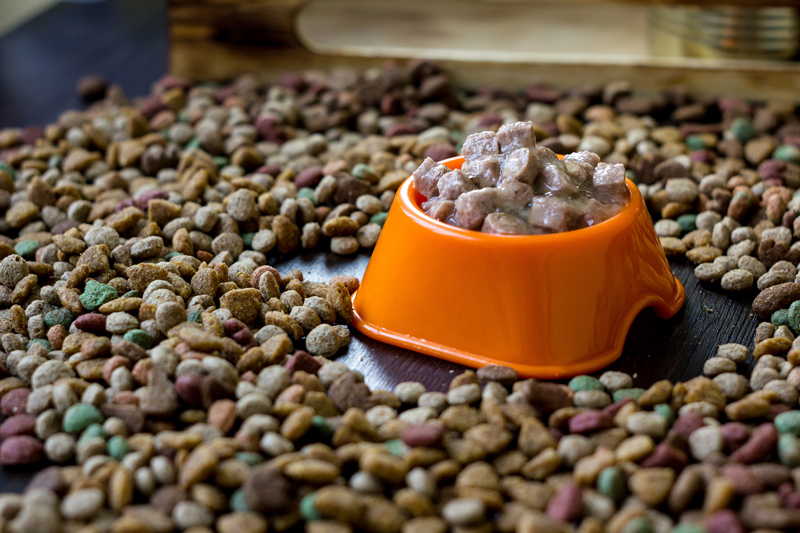
This is tricky! You can try the recommended portion on the can, or you can try to make some educated leaps about equivalent serving sizes. You’ll have to figure out how many calories your dog is eating per day in dry food and then assess the amount of canned food you’ll need to hit the same approximate amount.
There’s no avoiding math when it comes to figuring out approximate calories. Because of the differing moisture levels and formulation between wet and dry food, it’s unlikely you’ll be swapping a cup of dry for a cup of wet.
Typically, canned food also contains fewer carbs and grain than kibble, because kibble needs grains and starches as part of the manufacturing process. Wet food means more protein and fat for your dog, and fewer grains even if your chosen wet food isn’t even grain free.
